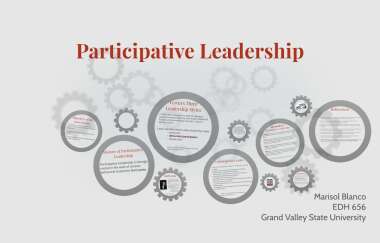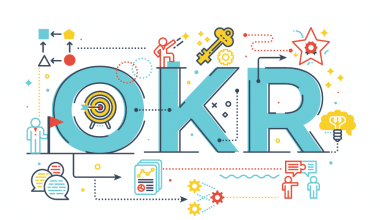What makes a successful company stands out is an effective leader. It facilitates open communication between its employees and top management. Although most organizations and business leaders have their own leadership styles. If you need an effective participative leadership style, examples, as well as its characteristics This article got you covered
What is Participative Leadership?
Before we begin, let’s get to know what leadership means. Leadership is a skill that a lot of people strive for. A good leader can inspire the masses and direct them to a single goal. Many different characteristics make up a great leader; charisma, charm, and social skills are all very important tools in leading successfully. Every individual that is in a leadership position has their ways of influencing team members in achieving their goals.

Participative leadership is a management style for managers who want to engage their employees in the company’s decision-making. In other words, Participative leadership is a style of leadership in which all team members work together to earn a consensus decision. This kind of leadership is also known as democratic leadership. It allows everyone to participate in the day-to-day run of the company. However, there are some key characteristics a participative leader should possess.
Types of Participative Leadership
Consensus, collective, democratic, and autocratic leadership are the four types of participative leadership. They are:
#1. Consensus Participative Leadership
Employees under this type of leadership have complete control over the outcome of a decision, the leader does not have additional power over other members of the group and works. The team leader may serve as a facilitator, but every employee must decide on the plan of action they want. Nothing happen until the team reach a conclusion.
#2. Collective Participative Leadership
This type of leadership entails a collaborative decision-making method in which everyone on the team shares equal responsibility for the actions and conclusion. To proceed with a decision, the majority of the group must agree.
#3. Democratic Participative Leadership
When it comes to quality decisions, the democratic approach entails getting feedback from the entire team, but senior management has the final word. The group contributes ideas and proposals, and the conclusion may be voted on, but the leader has the final decision on what steps to take.
#4. Autocratic participative leadership
Autocratic participative leadership is identical to democratic participative leadership, with the exception that the leader has more authority. The leader in an autocratic leadership accepts employee participation but retains complete decision-making control. An autocratic leader would not be supposed to explain their decision-making process.
key Traits/Characteristics of Participative Leadership
When employees are allowed to Participate, leadership gets easy because it helps in creating room for new ideas flowing upwards and downwards. Upward Communication allows your team members to take an active part in decision-making. You can also use the downward communication approach to send down information but with empathy. Therefore if a leader has these characteristics of participative leadership given below, He/she has a good driving force to get everyone along. They are responsible for counseling, training, and development opportunities for subordinates.
The following are the characteristics of participative leadership:
#1. Approachable
This kind of leader gets people to feel relaxed and at peace in their working environment, They don’t pressurize you. I guess you know that if People at ease can work together, unite, and communicate without fear of punishment then that company will definitely achieve its goal. Approachable leaders are proactive and good listeners.
If a leader is able to be strong, even when employees give bad news, the subordinates won’t feel startled to talk about the negative aspects of the task. Also being aggressive or introverted in nature might cause you difficulty in engaging others in the company’s affairs. Therefore to improve upon your approachability.
#2. Thoughtful
Applying a sense of thoughtfulness as a participative leader will enable you to deal closely with your team in this characteristics of participative leadership. Taking into consideration other people’s opinions and emotions is an important part of the leadership structure. With this, there will be an environment that fosters collaboration.
#3. Good communicator
These are the key characteristics of participative leadership. In order to excel as a participative leader, you must be good at communication. Effective communication is the life wire of every organization. It’s not just about doing the work of talking. The information must flow from upwards to downward and also from downwards to upwards. Communication requires proper feedback. When a leader communicates and doesn’t get feedback, then that communication is not effective. develop enough clarity in your speech to convey the message.
Meanwhile, there are two key aspects of communication in this leadership style: the ability to take in information and the ability to provide information. Non-verbal communication can help other people find you more approachable and better at getting your message across.
A participative leader must be able to share his or her knowledge with others, without causing confusion. However, you also need to communicate authoritatively, yet in an empathetic manner.
#4. Open-minded
This is another important characteristic of participative leadership. Irrespective of your job description, try to consult your subordinate’s views on suggestions and ideas, even if they contradict your original idea. Look at other concepts and methods with objectivity and an unbiased way. In fact, If you can’t kill your own biases then you aren’t truly open to subordinates. You can be more open-minded if you avail yourself of different approaches and ideas.
#5. Empowering
Lastly, a participative leader must empower other people. Since you are not the only person in charge, you want to ensure others are able to lead. The key is to empower them through knowledge and encouragement. You should also provide subordinates with support. Do not take part in judging or criticizing anyone when not necessary.
As a participative leader, ensure your subordinates have enough chances to learn and develop themselves. This doesn’t necessarily mean in terms of their careers, but also in other areas such as leadership and self-advancement. Importantly, provide them with the opportunities to become the best leaders they can be. You’ll one day be glad you did.
Participative Leadership Examples
As mentioned above, Participative leadership’s sole aim is to state a clear mission, vision, and objectives of the company before deferring management to employees. They communicate organizational goals, describe expected results, and encourage employees to be creative. Thus, this is a way to solve and improve performance. Meanwhile, examples of participative leadership are facilitators, social workers, arbitrators, and group therapists.
There are also examples of public figures who displayed a participative leadership. Participative leadership examples are:
#1. Bill Gates / Microsoft
One of the examples of participative leadership is microsoft’s founder Bill understood the value of empowering people and he realized that the best way to beat the market competition is by allowing knowledgeable team members to get involved in decisions making. You can agree with me that he actually succeeded.
#2. Carlos Ghosn / Renault & Nissan
In the world of auto manufacturers, Nissan and Renault CEO Carlos Ghosn is an example. The interesting aspect of Ghosn is allowing his team to be part of the decision-making process. He also believes that teams are best to know what needs to be done to increase productivity.
Participative Leadership Style
Participative leadership style refer to a leader’s behavior toward the team members. It is important you understand the different leadership styles and how they would work for you. While you need to use an authoritative approach on one occasion, you also need to be democratic or participative on others to move your team forward. Here are Four(4) Participative Leadership styles.
#1. Coaching Leadership Style
Coaching leadership is characterized by collaboration, assistance, and supervision. These heads are focused on bringing out the best in their teams by leading them through goals and obstacles. This leadership style is directly opposite to the autocratic leadership style which is focused on top-down decision making.
#2. Democratic Leadership Style
Democratic leadership is also known as shared or participative leadership. It allows members of the group to take a more participative role in the decision-making process. This type of leadership can apply to any organization.
#3. Laissez-Faire Leadership Style
This type of style is the direct opposite of autocratic leadership. laissez-faire leaders make decisions and allow team members to choose what would likely favor them. However, while they do not take or make a decision alone, they share possess these characteristics:
- Delegate authority to specialists
- Know when to step in and lead during a crisis
- Allow constructive criticism when unavoidable
- Increase leadership qualities of staff
- Allow the team members to solve problems and manage challenges
#4. Autocratic Leadership Style
This is also known as authoritarian leadership. It is a leadership style characterized by an individual having total control over all decisions and little or no contribution from group members. Autocratic leaders typically make choices based on their ideas and decisions. They rarely accept advice from subordinates.
If you want to understand how to develop an effective workforce Read Also: Leadership Team: Developing an Effective Workforce
CONCLUSION
Participative leadership brings innumerable benefits to an organization. Any leader who uses this style effectively will be able to involve the entire team in running the organization. Unlike other forms of leadership, participative leadership allows decision-making a collective responsibility. In short, the behavior shown by a leader during the supervision of his subordinates determines the success and growth of the company.
FAQs
What is a participative approach?
A participatory approach reveals that the person in charge of addressing a problem or inventing an innovation enlists the help of those who will be directly impacted by the outcome of his or her efforts.
What is participatory leadership training?
Participative leadership is a management style that involves the entire team in most decision-making actions. Before a final decision is taken, all team members are informed about company decisions and given the opportunity to provide feedback.
What are the skills required for participative management?
Communication is a required skill. If you want to be a part of a participatory management team, you’ll need to be able to communicate effectively. It’s critical to improve your active listening abilities and encourage team members to share their views. Group achievement is just as important as individual success in this management style.
Related Article:







1 comment